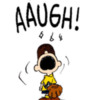Only two areas of concern for me on train electronics.
1-Electrolytic capacitors which I see on most all the boards. These are guaranteed to fail in time. The failure is usually linked to hours in service. People who leave their computers on all the time or in sleep mode see this sooner than those that don't. Those who use an outlet strip and completely turn off AC to the computer when not in use increase their capacitors life significantly.
Prime culprit of failure is poor electrolyte coating, and the second cause is poor circuit design. A good cap mfr will use a better coating and spacing. They also cost more. Ask Dell, IBM and Abit. They had huge recalls after buying cheap capacitors to use on their computer motherboards. Most use tantalum caps now which are far superior to electrolytic caps. They are also more expensive and have size limitations.
Designing the circuit with high ripple current or using low voltage caps will hasten their demise as well. The usual failure indicator is intermittent circuit failures which will become more consistent as the cap further degrades. You can look at the top of the cap and it should be flat. If it is rounded, bulging, or has a tan/dark colored residue on the top then I would immediately start looking for replacement options. These can usually be replaced fairly easy. I would recommend bumping the voltage rating on the replacement cap and buying a name brand capacitor.
2- Custom ICs or chips. This is where the majority of the train "function" is controlled. These are usually in the form of a PLCC module in a socket or may be soldered down as a leadless chip carrier, LCC. An LCC is usually in the form of a QFN or BGA part. These are extremely difficult to repair without some very expensive equipment. Nicer packages such as SOIC and QFP are difficult but easier to replace. It all comes down to having the new replacement part of course. If it's a PLCC module then it is likely a common programmable part, but you need the original train mfr code (usually copyrighted) and a programming machine. Many mfrs will remove the IC markings on even common chips and put their own part number on it.
Most everything else is diodes, transistors, resistors etc, and usually there are equal or better parts available to use in the board repair.
You can also try to find a similar engine to cannibalize, which hopefully does not have the same bad board as yours.
It might be wise to ask the train mfrs how long they intend to stock replacement boards for these engines. They are advancing the designs all the time. It would also be nice if their newer designs were backwards compatible, which is another good question to ask.
As a bare minimum you still have the bulk of the engine in good shape. You have the chassis, drive train and motors. You should be able to put a electronic e-unit in and possibly some aftermarket board to control smoke and some other functions. You may lose some of the original features, but the engine should be able to perform very well.






